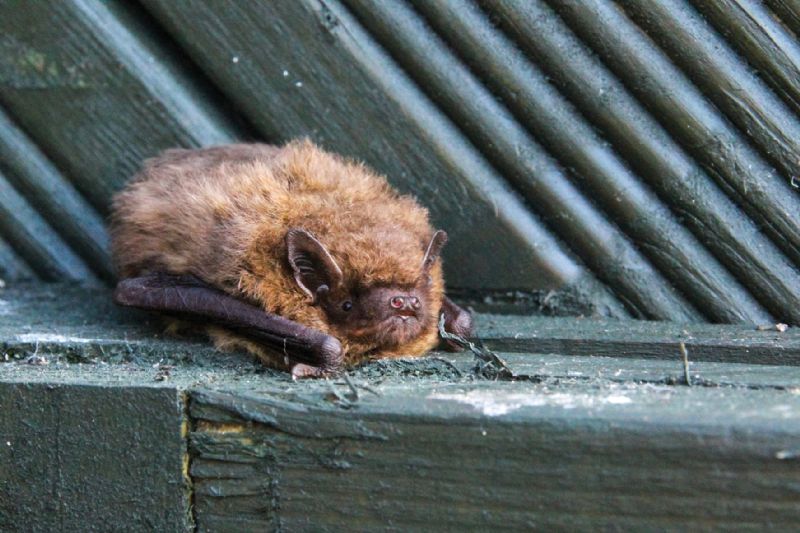- Home
- News, Articles & Reviews
We are hiring! Please click here to join our growing magazine delivery team in Gloucestershire!
Areas
Pets & Wildlife
Archive

Pipistrelle bats
All Areas > Pets & Wildlife > Wildlife Matters
Author: Dorothy Glen, Posted: Monday, 30th October 2023, 09:00
It’s rather lovely sitting out on a mild evening and seeing bats zipping about in the fading light. I’m always happy to see bats over the garden, hunting for dinner. If they’ve found plenty of insect life it’s a good sign of a thriving eco-system.
As far as I know, the only bats I’ve seen are pipistrelles, the UK’s most common bat. There are, however, 18 species of bat in the UK, which amounts to almost a quarter of our resident mammal species.
I remember going to a local event about bats when I was a child. We were asked to show with our hands how big we thought a pipistrelle bat was. Children waved their arms wildly in the air, demonstrating the size of these apparently enormous creatures. The expert explained that my hands, about 20cm apart, were about as wide as the bats’ wingspan.
In contrast to the giant suggestions from around the room, a pipistrelle’s head and body together are less than 5cm long, and they weigh no more than a pound coin. Even our largest bat, the noctule, is still small enough to fit in the palm of your hand.
A single bat can eat up to 3,000 insects in one night
Common pipistrelles emerge around 20 minutes after sunset over the milder months. They can fly at seven metres per second as they hunt and dive for prey in flight. Using echo-location, a single bat can catch and eat up to 3,000 insects in one night. They eat mostly small flies, including mosquitos and midges which emerge from water.
If you have a garden pond (or even a bucket of water sitting around for a while!) you may have seen that wiggly mosquito larvae are one of the first things to inhabit the water, and they attract lots of creatures that will eat them. Bats are no different. On a warm summer’s evening you may well see them over ponds, collecting the mosquitos which are attracted to the water or emerging as adults from the larvae.
At this time of year, pipistrelles and other bats will be becoming less active as the temperature cools. They will be in full hibernation by December and reappear again in the spring.
Interestingly, pipistrelles mate in the autumn, but fertilisation doesn’t occur until after hibernation. Females are pregnant in May and June, and then usually have a single pup which is raised in a maternity colony with many other females and young.
Bats like to hibernate in buildings where they can take advantage of warmth and shelter. You may have one or two settling down in your roof, behind tiles or soffits, under eaves or in other small crevices. If so, lucky you.Copyright © 2025 The Local Answer Limited.
Unauthorized use and/or duplication of this material without express and written permission from this site's author and/or owner is strictly prohibited. Excerpts and links may be used, provided that full and clear credit is given to The Local Answer Limited and thelocalanswer.co.uk with appropriate and specific direction to the original content.More articles you may be interested in...


© 2025 The Local Answer Limited - Registered in England and Wales - Company No. 06929408
Unit H, Churchill Industrial Estate, Churchill Road, Leckhampton, Cheltenham, GL53 7EG - VAT Registration No. 975613000You are leaving the TLA website...
You are now leaving the TLA website and are going to a website that is not operated by us. The Local Answer are not responsible for the content or availability of linked sites, and cannot accept liability if the linked site has been compromised and contains unsuitable images or other content. If you wish to proceed, please click the "Continue" button below:




